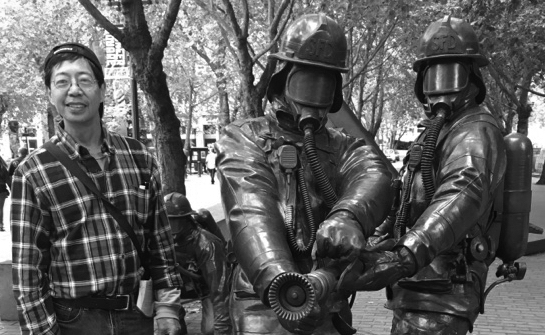
THE PLACES of Japanese American history matter because commonly they play roles in narratives approaching those of protagonists. Moreover, visiting the actual sites described helps readers form impressions of them in ways that words printed in books fall short of doing. Accordingly, such locations need to be described so that people can find them today.
As an example, in the spring of 2016, I brought a new student of Seattle JA history to Pioneer Square, to show her the neighborhood. Her impression hit the nail on the head:
“This is no place for a child to grow up.”
We had gone to Pioneer Square to find the exact location of the Rainier Hotel, where Monica (Itoi) Sone grew up. Ms. Sone is the author of “Nisei Daughter” (1953), arguably the best JA book to come out of Seattle.
I believe that the Rainier Hotel is the real name for the pseudonymous Carrollton Hotel that contributed to forming Ms. Sone’s character. My interpretation is based on the photo of a young Monica and her younger sister, Sumiko, which graces the cover of the 1979 paperback edition (right).
The opening pages of Nisei Daughter describe the location of the Rainier Hotel.
“In January, 1918, their [her parents’] first child was born, Henry Seiichi— son of truth. Shortly after, Father sold his little shop and bought the Carrollton Hotel on Main Street and Occidental Avenue, just a stone’s throw from the bustling waterfront and the noisy railroad tracks. It was, in fact, on the very birth site of Seattle when the town began its boisterous growth with the arrival of pioneer Henry Yesler and his sawmill on the waterfront. In its early days, the area south of Yesler Hill, where we lived, was called Skid Road because loggers used to grease the roads at intervals to help the ox teams pull the logs down to the mills. Nearly a hundred years later, the district bore the name Skidrow, a corrupted version of Skid Road, with its shoddy stores, decayed buildings, and shriveled men.”
The line disclosing the hotel’s precise location occurs a few pages later.
“For our family quarters, Mother chose three outside rooms looking south on Main Street, across from an old and graying five-story warehouse…”
As the original hotel has been torn down, the best landmark for its former location is the Fallen Firefighters Memorial. It was erected by artist Hai Ying Wu, in 1988, for the men who fell through the roof of the blazing Mary Pang’s warehouse in the nearby International District.
As we were figuring this out, a party of Japanese tourists walked by. I thought about stopping them, to tell them about the place where their feet were falling, but then decided to just leave them be.








